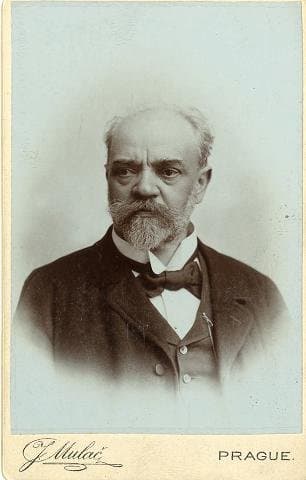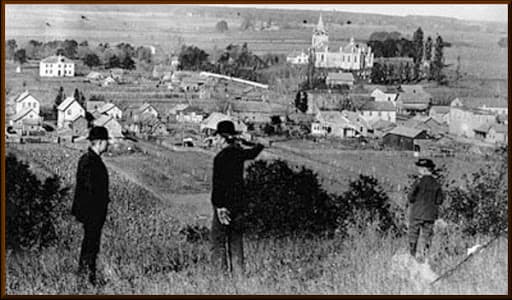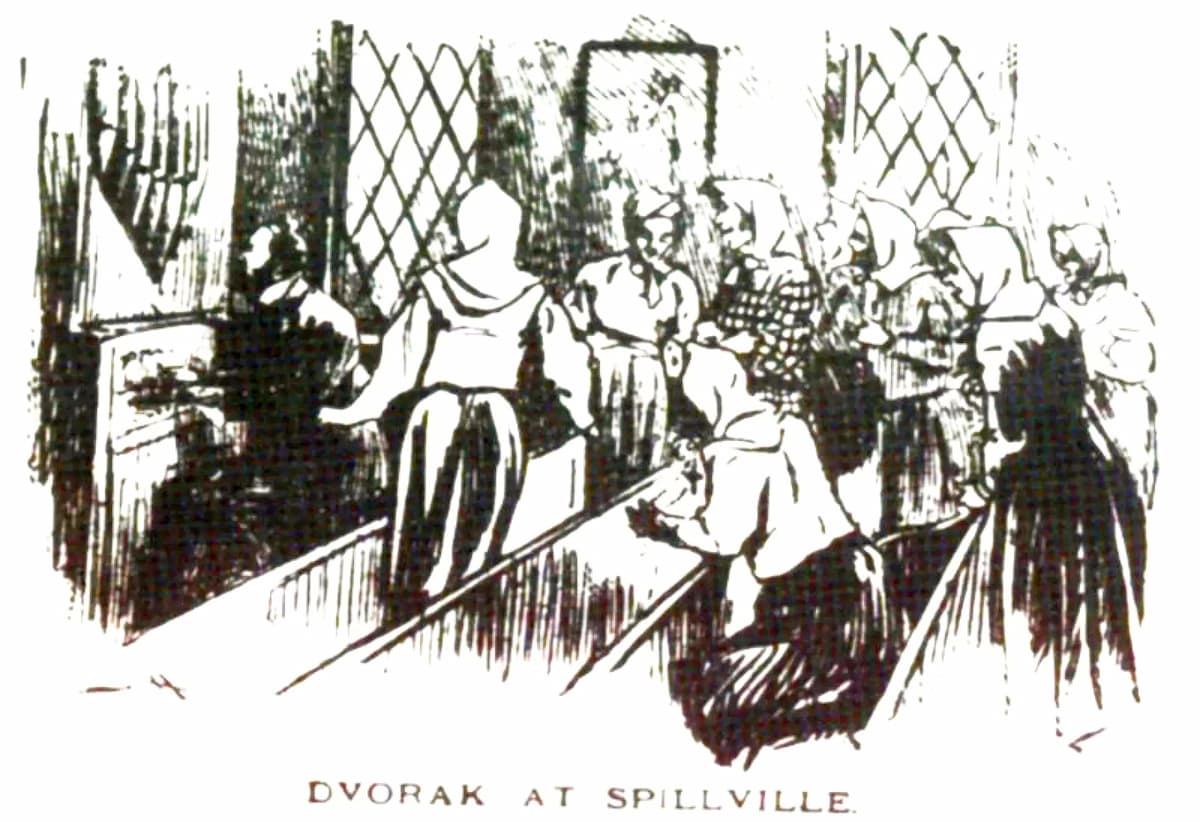Antonín Dvořák (1841–1904) spent three years in America and gave us some great works written during that time that were highly influential. His use of native American and black song sources opened the eyes of many American composers to the musical world that they actually lived in, rather than looking only to the musical world of Europe for inspiration.

Antonín Dvořák
Dvořák’s move to the US in 1892 to head the National Conservatory of Music in America was short-lived, failing both on economic grounds when his sponsor’s funding failed and his own homesickness drove him back to his native Bohemia in 1895. He left, however, two ‘American’ works: his Symphony No. 9 in E minor, ‘From the New World’, and his String Quartet in F major, Op. 96, ‘American’. There was a third ‘American’ work, his Suite in A major, written in 1894 for piano and orchestrated in 1895.
Although the work relies heavily on Dvořák’s European background, his inclusion of melodies and rhythm that tie the work to its American inspiration continue to play a part. Each of the movements is dance-inspired and seems designed to be cyclical, connecting through the outer movements.
His use of thematic material is much simpler than in the other two American pieces. His melodies are simple and unadorned, the rhythmic patterns are straightforward, the harmonic progressions are clear. Sometimes his melodies reach out of the basic key constructions toward pentatonic tunes, modal colours, and a gentle, subtle movement between major and minor. He creates a new kind of American music without copying what’s already around him, as he did in the earlier works. It’s stylish and exotic while also being plain and local. It’s these shifts that let us know it’s Dvořák driving the pen.

Spillville, Iowa in the late 19th century
The work starts almost as a dreamy float – are we on the water or just lying back watching the clouds?
Antonín Dvořák: Suite in A Major, Op. 98b, B. 190, “American” – I. Andante con moto (Lucerne Symphony Orchestra; James Gaffigan, cond.)
The second movement Allegro plays with changing rhythmic emphasis and repetition. It could be Beethoven as much as Dvořák, in a sense.
Antonín Dvořák: Suite in A Major, Op. 98b, B. 190, “American” – II. Allegro (Lucerne Symphony Orchestra; James Gaffigan, cond.)
In its piano version, the third movement comes across like an early version of stride piano music; as an orchestral piece it has a bit more of a serious side, but it’s a dance to sweep you around the floor in any case.
Antonín Dvořák: Suite in A Major, Op. 98b, B. 190, “American” – III. Moderato (Alla Polacca) (Lucerne Symphony Orchestra; James Gaffigan, cond.)
This movement moves us to the empty landscapes where Dvořák spent his homesick summers in the Bohemian enclave of Spillville, Iowa.
Antonín Dvořák: Suite in A Major, Op. 98b, B. 190, “American” – IV. Andante (Lucerne Symphony Orchestra; James Gaffigan, cond.)

Dvořák at the local church organ in Spillville, IA
It’s the final movement that sounds more like Dvořák’s other American works and where he manages to move from a minor key tune that sounds like it comes from a native American source to a major key melody that sounds like it comes from the American south. A change in orchestration, a change in rhythmic emphasis and, all of a sudden, we’re in a new culture.
The theme from the first movement returns at the end, tying the work together.
Antonín Dvořák: Suite in A Major, Op. 98b, B. 190, “American” – V. Allegro (Lucerne Symphony Orchestra; James Gaffigan, cond.)
The work has not had the success that the other American pieces have had, some viewing the work as lacking a central cohesiveness. It may be that this was Dvořák’s farewell to America – he started his compositional work by using the melodies and ideas he had around him in New York and Iowa, and, by the end, could create his own versions of those sounds.
The piano version was given its premiere in 1894, but the orchestral version wasn’t performed publicly until 1910, six years after Dvořák’s death.
For more of the best in classical music, sign up for our E-Newsletter



